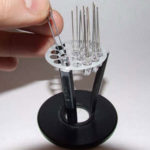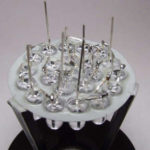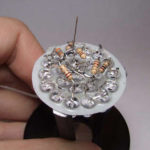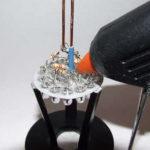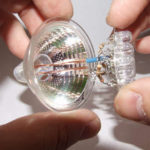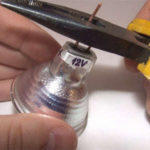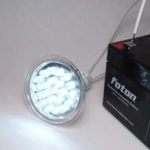LED lighting devices are widely used in the organization of not only household lighting, but also street, industrial. This is due to several significant advantages, namely, unpretentious maintenance, maintainability, environmental friendliness and economy. A DIY LED chandelier will definitely find use in the house, the main thing is to make it in compliance with all safety rules.
Wiring diagrams for 220 V LED lamps

There are several schemes by which you can make a homemade LED chandelier. Before getting started, it is important to decide on the assembly method. There are two main ones, each of them has its own advantages and disadvantages.
Diode bridge application
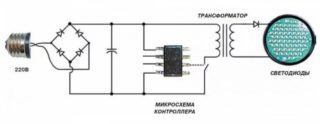
The circuit includes four main diodes, they are connected in different directions. This makes it possible to convert the mains current into a pulsating one.
Conversion occurs as follows: the sinusoidal half-waves change when passing through two LEDs, which leads to a loss of polarity.
During assembly, a capacitor must be connected to the positive output in front of the bridge, and a resistance of 100 ohms is required in front of the negative terminal. The circuit is equipped with another capacitor installed behind the bridge, it is necessary to smooth out voltage surges in the mains.
Manufacturing of LED bulbs
The easiest way to implement is to make a new lighting device based on the broken one. The operability of each detected part is pre-checked; this can be done using a 12 V battery.
Failed elements are subject to mandatory replacement. To do this, the contacts are unsoldered, the faulty parts are removed and new ones are installed in their place. When performing work, it is important to consider the correct sequence of anodes and cathodes, otherwise the device will be inoperative.
When self-manufacturing, you need to connect 10 diodes in one row, taking into account the rules of polarity. Several of these circuits are connected to the wires with a soldering iron. It is necessary that the soldered ends of the wires do not touch, otherwise this will inevitably lead to a short circuit and the system will fail.
Homemade soft LED lamp
A negative feature of LED lamps is regular flickering. To prevent this, the above-described circuit is additionally equipped with several parts. Thus, it includes 400 nF and 10 μF capacitors, 100 and 230 Ohm resistors, and a diode bridge.
To protect the lighting device from voltage surges, a 100 Ohm resistor is moved to the beginning of the circuit, a 400 nF capacitor is soldered behind it, followed by a diode bridge and another resistor.
Resistor-equipped devices
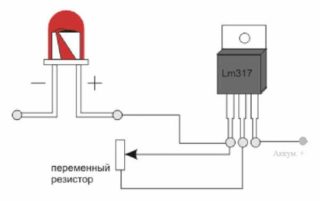
Implementing such a scheme is within the power of a novice master who has no skills. You will need two resistors of 12k each and two LED chains with the same number of bulbs, which are soldered in series taking into account the polarity.One strip is connected by the anode, and the second by the cathode.
Luminaires assembled according to this scheme have a softer glow. This can be achieved thanks to the pulsation of flashes that are not visible to the human eye. Such lighting fixtures are most often used in the form of table lamps.
Housings for LED luminaires
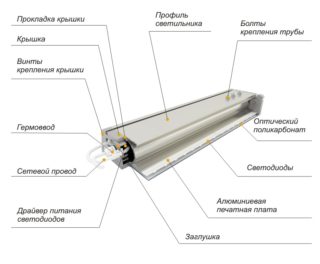
In addition to the correct assembly of the circuit, you need to take care of creating the case in which it will be placed. There are several ways to solve the problem.
- Various hand-made devices.
- Burned-out incandescent lamp caps.
- Housings from burnt out halogen or energy saving lamps.
The use of an incandescent lamp base has one significant advantage - a self-assembled LED lighting device can be easily screwed into a cartridge and thus provide the necessary heat transfer. At the same time, there is also a significant drawback - the lamp ultimately does not have a very aesthetic appearance.
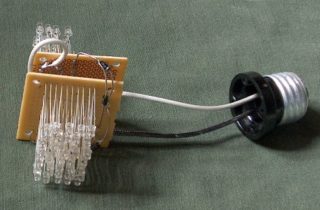
The most practical, safe and easy-to-implement way is to place the manufactured circuit in an energy-saving lamp housing. The previously burned out light bulb should be disassembled and the converter board removed from it.
- The board is installed directly into the base. For the convenience of implementing the method, it is recommended to use an ordinary plastic cap from a water bottle.
- LED bulbs are placed in holes that are pre-made in the lid located under the glass bulb.
To simplify the process of placing LEDs, craftsmen use circles made of cardboard or plastic, in which holes are made for diodes. If the work is done carefully, the end result will have a rather aesthetic appearance.
Halogen lamps can be used as a housing. This method has not become widespread, since there is no way to screw the lamp into the holder. However, this design is used to make various homemade indicators.
Materials for making a homemade LED chandelier
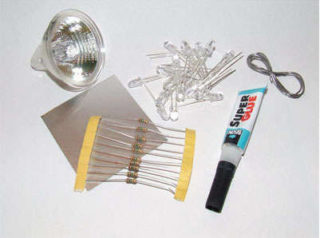
For the manufacture of an LED luminaire, you will need to buy separate NK6 brand LEDs or tapes. The current strength is 100-120 mA, the voltage is 3-3.3 V.
You also need 1N4007 rectifier LEDs or a diode bridge, fuses, which are contained in the base of old devices.
A capacitor is also required, the voltage and capacity of which fully correspond to the technical parameters of the electrical circuit. If the finished board is not used, you additionally need to take care of the frame to which all the parts will be attached. The material from which the homemade frame is made must be heat-resistant and non-conductive. Superglue or liquid nails are used to attach the parts.
Assembly of luminaires in a housing with LED strips
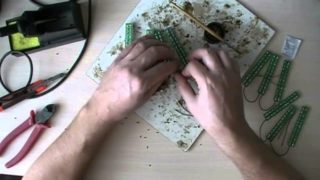
Before getting started, it is important to familiarize yourself with the manufacturing technology of LED lamps.
LED bulbs with a factory-made aluminum substrate are connected to a radiator. In this case, the metal or plastic housing of the luminaire plays the role of a radiator. If the latter look is applicable, the surfaces must be pasted over with aluminum tape to ensure high-quality heat dissipation. The LEDs in the circuit are sequentially soldered.
Since LED bulbs are with a footrest, they are attached to the radiator with hot melt glue.
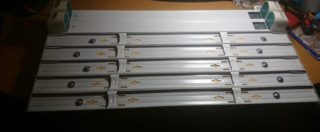
For optimal operation of a homemade device, light bulbs should have the following characteristic features:
- LED stream 140 lumens.
- The supply voltage is within 3.2 - 3.4 volts.
- The wavelength is about 6,500 Kelvin, the light is cold.
- The consumed current is 350 milliamperes.
You will also need an LED driver with the following specifications:
- The operating temperature range ranges from -45 to +75 degrees Celsius.
- Input voltage from 100 to 240 volts.
- Output current 300 milliamperes + - 5%.
- Output voltage from 18 to 46 volts.
For the smooth and high-quality operation of the device, two fundamental factors are taken into account - the operating voltage and the LED current. The operability of the lighting device also depends on the current consumed by the LED, and the output current from the driver.
LED bulbs are not able to control current consumption; when connected directly to an outlet, the device simply fails. Driver installation is required.
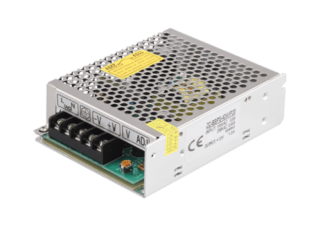
When all the necessary parts are ready, you can start soldering the circuit. You cannot keep a hot soldering iron on the contacts of the LED for a long time, this will negatively affect their performance.
The driver is also mounted inside the case. Some experts additionally recommend covering the case with the circuit with diffusing glass.
Decorative homemade LED lamps are widespread, since their appearance can be diversified with special paper with different images, threads, beads and fabric. You can also apply glaze or acrylic paints to the housings. The main thing, when transforming a homemade lamp, is not to forget about the safety of operation. Appliances are installed, wall-mounted or suspended in hallways, living rooms and kitchens.
It is not recommended to use LED lamps as the main source of lighting in the room. It is preferable to use them as auxiliary or in the form of illuminations of various decorative elements, for example, figurines or plants.


